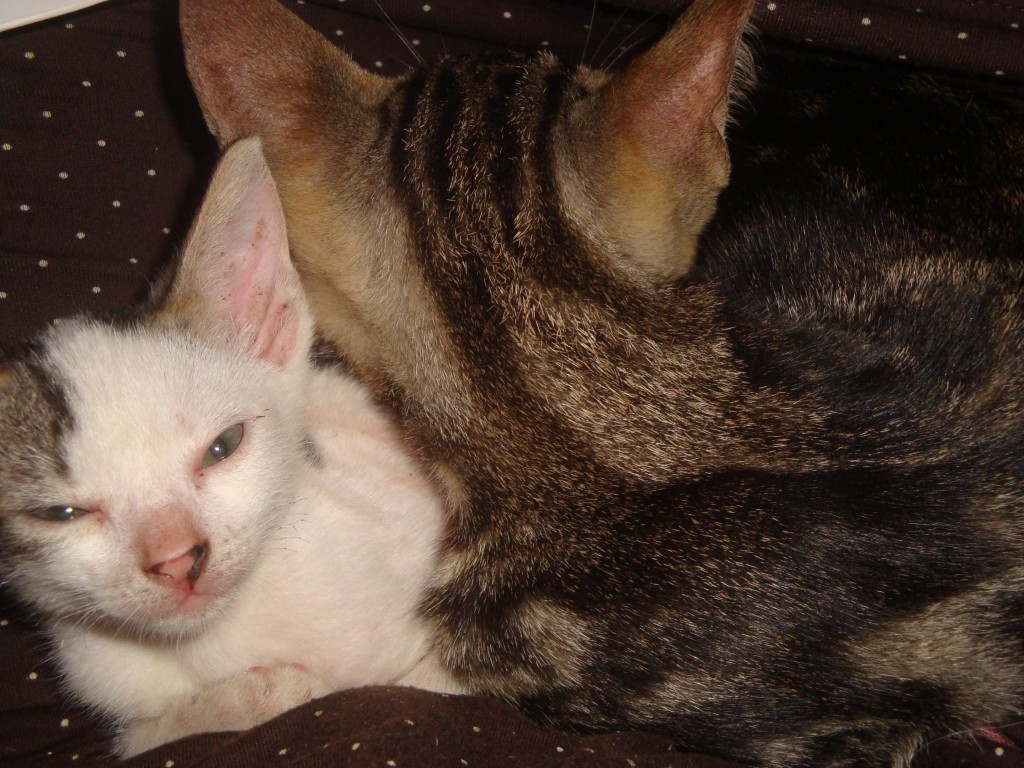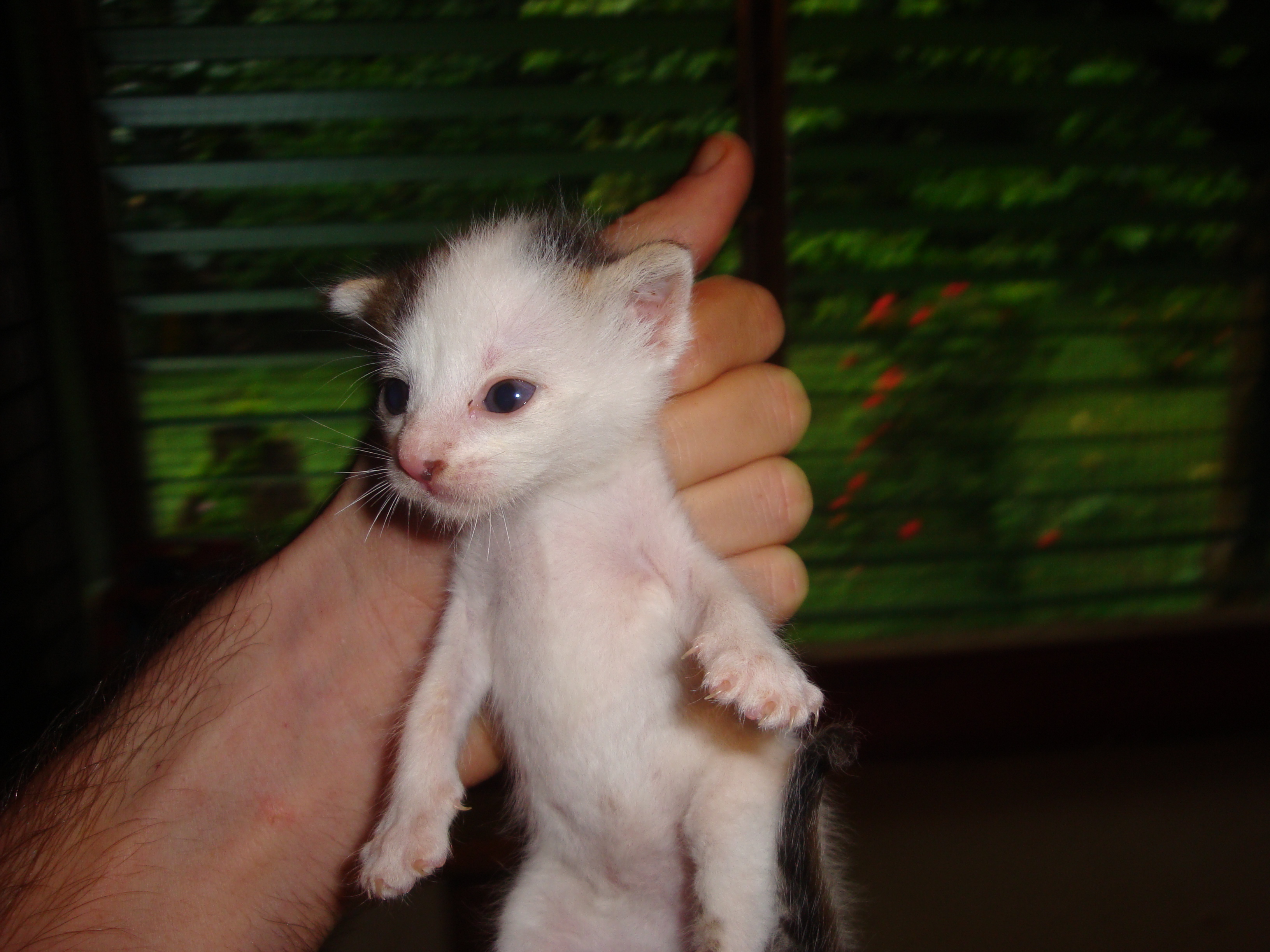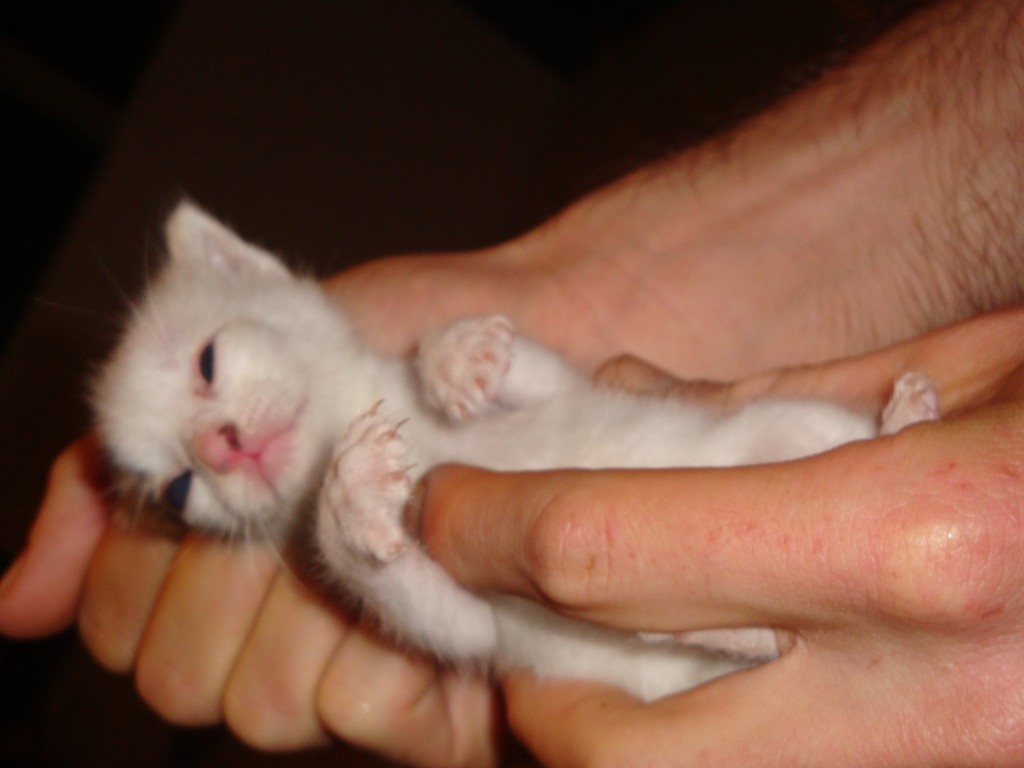
A couple of months into our teaching stint in Pohnpei, Tim and I were happily settled into a local house in the rural municipality of Kitti. Animal lovers that we are, we had already named Wally the chick who liked to follow us around in the garden, grown accustomed to nightly visits from the feral cats that nested in our kitchen sink, and adopted Mphatso (Em-pot-so) the kitty from our next-door neighbors. Along with lizards, frogs, and ants, this all made for a pretty full house. We were content. We had no idea what was coming.
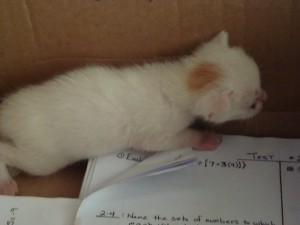
When Mphatso was about eight weeks old, we came home from school to find two tiny week-old kittens mewing from inside a box under our couch. Ears still pinned down, eyes squinted shut, they seemed to have appeared out of thin air. We pulled the box from under the sofa and left it in the middle of the floor, knowing that the best thing for the babies would be for their mother to come back and take them with her. Not ten minutes had passed when a sleek white cat hoisted herself over the back wall of the house, another baby hanging from her mouth. She spotted us and paused. Slowly, she took the new kitten to the middle of the floor and left it beside the box, then darted back over the wall and across our yard.
Still, we left the kittens. We gave them some t-shirts to curl up in and went to bed that night hoping their mother would return for them. In the morning, we found that she had in fact returned for the babies and had taken two with her. But the final kitten—the smallest one—she had left. We waited and waited, but we began to worry. He was already weak; how long could he go without eating anything?
And so, meet Paiamwahu (Pie-uh-mwow—“Lucky”), love of our lives and feral kitten we learned to raise. It wasn’t easy. We did a lot of research. We made do with what we had. And, as his name suggests, we got pretty lucky.
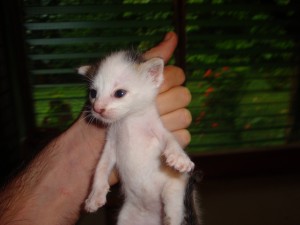
This was a unique experience, and Paia is a unique cat. Chances are, though, if you live in a developing country, you, too, will have the opportunity to raise a feral animal if you want to. While it doesn’t always turn out as well as it did for us, it’s an extremely rewarding experience—one which Tim and I would suggest everyone try at least once in their lives.
If you do decide to take in a feral kitten, make sure to do your research first. Paia came to us without warning, but we got online as quickly as we could to find out how to keep him safe. There are plenty of resources out there written by experienced professionals with specific guidelines about what your new pet will need. In the meantime, though, here are some tips that helped Tim and me when we were just starting out with raising Paia.
Think warmth. Even in tropical Pohnpei, Paia needed a hot water bottle in his crate round-the-clock. Make sure your kitten can snuggle up to the bottle without getting burned (it helps to wrap it in a blanket) and also get away from the bottle when it needs to.
Shelter. A small enclosed space will help keep in the heat. Make sure other animals can’t get to the kitten and that the kitten can get plenty of air. The best we could do was a two-foot deep Tupperware container with the lid partially opened for ventilation. This worked fine until Mphatso learned to knock the lid into the container to get a closer look at Paia.
Feeding. An eyedropper or nursing bottle is best. Not having either at our house or on-island, we sterilized a travel-sized contact lens solution bottle. The key here is sterile, small, and controllable (not free-flowing).
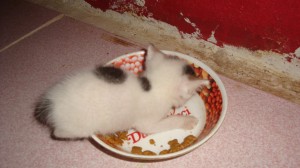
Food. This depends on what’s available. Ideally, you should feed your cat formula from the vet. The next best option would be milk. If you’re like us, you can only get sweetened condensed milk. Whatever you’ve got, make sure it’s warmed to body temperature. Past that, do your best. Paia survived, but he was underweight for a long time. As soon as possible, we switched him to wet cat food and eventually to dry cat food soaked in milk and water. With bottle feeding, it’s important not to force feed and to make sure you flip the kitten upside down immediately if you suspect he has aspirated the liquid into his lungs. Kittens also need to be burped. When the kitty’s belly is round and bubbles form around his mouth, he’s full. For the first couple of months, expect to feed your kitten every few hours.
Um, poop. What we didn’t know going in is that baby kittens can’t go to the bathroom on their own. Their mothers lick their abdomens and other delicate areas to stimulate elimination. As the stand-in mother, you need to use a warm wet cloth to gently rub your kitten’s abdomen and bottom after each feeding. This will allow your kitten to eliminate waste. We just made this a part of Paia’s feeding regimen; after burping him, we’d use a tissue-sized towel to sponge bathe him (it’s important to keep kitties clean but not wet and cold), then use a smaller towel for potty time.
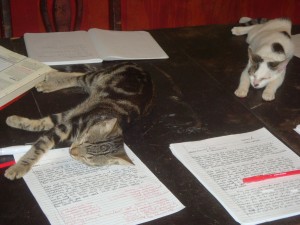
Veterinarian. We were in a complicated situation with Paia in Pohnpei. There is only one vet on the island, and he’s only in residence for a few days every few months. We took him to the vet as soon as we could, and we’d encourage anyone taking care of a feral kitten to do the same.
At any rate, experience is the best teacher, and raising a kitten is something you get better at as you go along. We love our little feral kitten-turned-cat, and we’re sure you will, too. Paia is now full-grown and healthy, and he still loves to climb trees and play with rocks in his new home with us in Tennessee. He’ll be one year old next month, and his favorite aspect of American life is having a nice warm (non-moldy) bed to curl up in all day long.
Can’t get enough of Paiamwahu? Want to see more pictures? Become Paia’s friend on facebook: Paiamwahu.
